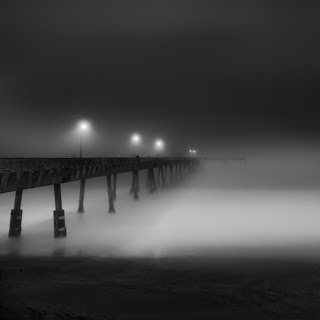Symphonies of Silence

An extraordinary image by Nathan Wirth.
I've for too long delayed immersing myself in silent documentaries, an undeservedly obscure category given that motion picture cameras were quite naturally and instinctively turned to the world as it existed that very moment. In fact, I've drawn a long list of both silent and other documentaries from Erik Barnow's excellent Documentary Film: A History of Nonfiction.
What generated that list, though, is more specific, and that's Berlin: Symphony for a City, the first such documentary I watched. It's a symphony, all right, and you don't need music to hear it. What really gets me about this film is the incredible freedom its makers obviously felt. Like poetic meter, silence imposed numerous constraints upon filmmakers, leading to results still interesting more than a hundred years later.
 That point brings to mind the artists of all kinds who constantly bear witness to the restorative spring waters of restricted freedom. Perhaps there's something oppressive about freedom. Or perhaps freedom is best found in
That point brings to mind the artists of all kinds who constantly bear witness to the restorative spring waters of restricted freedom. Perhaps there's something oppressive about freedom. Or perhaps freedom is best found in restraint. Can anyone deny that an unfettered consumer economy unleashed upon the world has -- by the very emptiness of the quasi-freedom (to buy)
it offers -- all but engulfed those within and without its nebulous
borders?
No, it's an inarguable point. Sold. Now what? That's a good question. Why is Berlin: Symphony for a City infinitely more entertaining and enlightening than 999 out of 9999 current feature films or even "independent documentaries" and in the latter case sharing such creative titles as -- I kid you not -- Super High Me, Super Amigos, and Super Squad: The Super Documentary? That's enough to make anyone nostalgic for the Soviet Union, unless anyone is me and follows that point through a few twists and turns to several lucid and relevant points made by Dmitri Orlov in his article Post-Soviet Lessons for a Post-American World:
There is a lesson here: when faced with a collapsing economy, one should
stop thinking of wealth in terms of money. Access to actual physical
resources and assets, as well as intangibles such as connections and
relationships, quickly becomes much more valuable than mere cash...
I went and stood in line for the cashier, presented my thousand-ruble
note, got a pile of useless change and a receipt, presented the receipt
at the counter, collected a glass of warm brown liquid, drank it,
returned the glass, paid the old woman, got my sweet bun, and thanked
her very much. It was a lesson in civility...
I went back a year later, and found a place I did not quite recognize.
First of all, it smelled different: the smog was gone. The factories had
largely shut down, there was very little traffic, and the fresh air
smelled wonderful!
The connection is probably not clear, so I will make it clear. These moments of clarity, so neatly drawn, resemble nothing so much as the scenes presented in Berlin: Symphony for a City, with one exception. Orlov's vignettes are set in post-Soviet Russian cities, while the Berlin in our feature is -- if you watch closely -- on the brink of Nazism and not so far from its own post-status. But before watching the film, here's a preemptive cliffhanger from Orlov:
[The United States and Soviet Union] replaced family farms with unsustainable, ecologically
disastrous industrial agribusiness, addicted to fossil fuels. The
American ones work better, as long as energy is cheap, and, after that,
probably not at all.
Replace Soviet Union with Germany. And begin...
If equally carried by Berlin: Symphony for a City, I've located a few resources that will lead you and I to a long and winding silent road.
Early Cinema: Basic resources. No films but a concise and useful history.

Fandora: If you don't have a Roku, I highly recommend one. Spend $75 or so and you'll have access to endless resources. If not, and either way, Fandora lets you watch all its films online and, for our current purposes, includes an entire section devoted to silent documentaries.
Open Culture is one of those sites that fulfills the Internet hyperbole most of have nearly forgotten only to see that it's not as dead as we had learned to believe. This page refers to a Scorsese tribute to silent film and includes a link to one of the Lumier Brothers most-honored documentaries. After that, watch still more silent films.
Silent Era offers reviews of restored silent film releases, relevant articles and reviews, and, most importantly, its Progressive Silent Film List.
I can't go on forever, so I'll close out with the Documentary Archive and its excellent History of Documentary Film and list of Resources.
That's enough to keep us walking on our wandering path, for what else should we do if not wander?
Happy travels.Visit Toth Link Portal for links to all of Paul A. Toth's work.













Published on December 08, 2012 23:01
No comments have been added yet.
Violent Contradiction
In the spirit of Henri Lefebvre, E.M. Cioran and Georges Bataille, this blog illustrates and documents Bataille's maxim that "truth has only one face: that of a violent contradiction."
In the spirit of Henri Lefebvre, E.M. Cioran and Georges Bataille, this blog illustrates and documents Bataille's maxim that "truth has only one face: that of a violent contradiction."
...more
- Paul A. Toth's profile
- 37 followers



